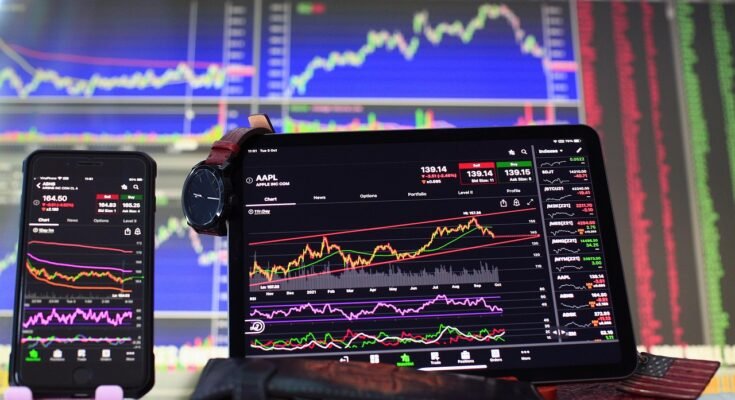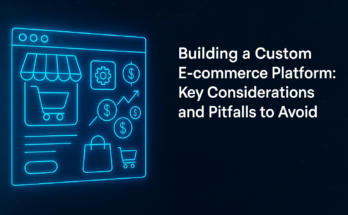Technology is rewriting the rules of investing. What once required hours of analysis, phone calls to brokers, and gut instinct is now being transformed by artificial intelligence. Among the most disruptive shifts in finance today is the rise of AI trading platforms—software systems that use algorithms, machine learning, and data science to make smart trading decisions faster than any human ever could.
One name making waves in this space is Quantum AI, a platform blending the power of AI with the potential of quantum computing. But before we zoom in on that, let’s break down what AI trading is, why it matters, and how platforms like Quantum AI are changing the financial game.
What Is an AI Trading Platform?
An AI trading platform is a software application that uses artificial intelligence techniques—like machine learning, neural networks, and natural language processing—to analyze market data and execute trades. It learns from historical data, identifies patterns, adapts to new information, and often operates in real time.
Here’s what a typical AI trading platform does:
- Data Collection: Scrapes data from financial markets, news outlets, economic indicators, and even social media.
- Signal Processing: Identifies buy/sell signals based on complex patterns.
- Risk Management: Adjusts investment strategies based on portfolio performance and market volatility.
- Execution: Places orders automatically, often using high-frequency trading (HFT) techniques.
In short, AI trading platforms act as tireless analysts, strategy testers, and execution engines—operating around the clock and learning continuously.
Why AI Is Taking Over Financial Markets
Traditional investing relies on human intuition, technical analysis, or manual fundamental research. That model has its limits:
- Emotions cloud decisions.
- Speed is a disadvantage.
- Access to data is limited.
- Mistakes are costly.
AI doesn’t suffer from fatigue or fear. It can digest terabytes of data, simulate thousands of scenarios, and act instantly. More importantly, it gets smarter with time.
Some advantages of AI trading:
- Predictive accuracy: Models can spot signals in price action that human traders might miss.
- Speed and automation: Execution happens in milliseconds.
- Backtesting: Strategies can be tested on historical data before going live.
- Portfolio diversification: AI can manage dozens of strategies across multiple markets simultaneously.
This has led to a growing number of hedge funds, prop trading firms, and even retail investors adopting AI trading tools.
Enter Quantum AI: A Glimpse Into the Next Frontier
Among the many AI trading platforms gaining attention, Quantum AI stands out—not just for its marketing hype, but for its attempt to integrate quantum computing principles into algorithmic trading.
What Is Quantum AI?
Quantum AI is a trading platform that combines artificial intelligence with quantum computing-inspired algorithms to optimize decision-making at a scale traditional AI struggles to achieve. While full-scale quantum computing is still emerging, platforms like Quantum AI aim to simulate or mimic quantum logic to solve complex trading problems faster and more accurately.
It claims to:
- Analyze vast datasets in fractions of a second.
- Detect profitable opportunities with high precision.
- Adapt to rapidly changing market conditions.
- Offer a user-friendly experience for traders with little or no technical background.
Is It Really Using Quantum Computing?
It’s important to be clear: most platforms branded as “quantum” today aren’t using actual quantum hardware, like a D-Wave or IBM Q system. Instead, they use quantum-inspired algorithms—mathematical approaches that simulate quantum mechanics on classical computers.
That said, even a quantum-inspired model can significantly improve computation speed and pattern recognition in complex systems like financial markets.
Features of AI Platforms Like Quantum AI
AI trading platforms, particularly those like Quantum AI, are designed to streamline, accelerate, and enhance the entire trading process. They merge machine intelligence with user-centric design to serve both seasoned investors and beginners. Below are the core features you’ll typically find—each explained in depth.
1. Automated Trading Algorithms (Bots)
One of the most powerful features is the ability to run automated trading bots. These bots execute trades based on pre-defined strategies without human intervention.
- How it works: The user selects a strategy (or builds one using drag-and-drop tools), sets parameters like asset type, trade size, risk level, and the AI bot monitors the market 24/7, placing trades whenever conditions match.
- Advantages: No emotional decision-making, faster execution than manual trading, and the ability to capitalize on opportunities across different time zones and markets.
- In Quantum AI: Bots are marketed as using quantum-inspired logic to optimize entry/exit points and adapt in real time to changing volatility levels.
2. Advanced Market Analysis in Real Time
AI platforms ingest massive volumes of real-time data, from live price feeds and economic indicators to news sentiment and social media trends.
- Natural Language Processing (NLP): Enables platforms to “read” news articles, earnings reports, and tweets to determine market sentiment.
- Pattern recognition: Machine learning models are trained to recognize complex patterns in charts (candlestick formations, volume spikes, etc.) that precede significant price movements.
- Speed advantage: AI can process this information in milliseconds and react immediately—something no human trader can do.
In the case of Quantum AI, the system is designed to process multi-dimensional datasets, simulating quantum probability states to anticipate multiple future outcomes.
3. Backtesting and Strategy Simulation
Before risking real money, traders can test their strategies using historical data. This is crucial for determining whether a strategy is viable.
- Backtesting: AI trading platforms let users run their strategies against past market data to see how they would have performed.
- Forward-testing: Some platforms, including Quantum AI, allow you to test in live markets using virtual money (paper trading).
- Optimization: AI models can automatically fine-tune parameters for better historical performance, minimizing human guesswork.
Quantum AI, in particular, advertises the use of quantum-inspired optimization to test thousands of variable combinations simultaneously, speeding up what would otherwise take hours or days.
4. Risk Management and Capital Allocation Tools
Effective trading is not just about spotting opportunities—it’s about managing risk. AI platforms typically include robust risk management systems.
- Position sizing: The AI adjusts the size of each trade based on risk tolerance and overall portfolio exposure.
- Stop-loss/take-profit automation: Automatically sets exit points to limit losses or lock in gains.
- Dynamic rebalancing: In response to market changes, the AI can rebalance your portfolio in real-time, shifting capital toward better-performing assets or safer bets.
Quantum AI claims to use predictive modeling to foresee high-risk conditions and alter strategies before major losses occur—a proactive rather than reactive system.
5. User-Friendly Interface with Customization
Despite the technical complexity behind the scenes, platforms like Quantum AI are built with simplicity in mind.
- Drag-and-drop strategy builders: You don’t need to know how to code. Users can construct trading strategies visually.
- Custom dashboards: Real-time performance metrics, risk exposure, and market alerts are displayed in clean, modular dashboards.
- Mobile and web access: Platforms typically offer responsive web apps and mobile access so trades and data are available anytime, anywhere.
Quantum AI positions itself as beginner-friendly, offering guided onboarding and tutorials, while still allowing experienced traders to tweak deeper parameters.
6. Multi-Asset and Multi-Market Trading Support
AI trading platforms don’t just stick to one market—they often support stocks, forex, crypto, commodities, and even indices.
- Cross-market analysis: AI can look for correlations between markets (e.g., how the bond market might affect tech stocks).
- Arbitrage opportunities: Some platforms identify pricing inefficiencies across exchanges and exploit them instantly.
- Round-the-clock trading: Especially useful for 24/7 markets like crypto.
Quantum AI highlights its ability to monitor multiple markets simultaneously and shift focus dynamically as opportunities arise.
7. Learning and Adaptation (Self-Improving Models)
Unlike static trading systems, AI platforms continuously learn from new data.
- Machine learning loops: The system evaluates the outcome of each trade, adjusts parameters, and evolves.
- Model retraining: Over time, models improve in predictive accuracy and become more aligned with current market conditions.
- Behavioral detection: Advanced AI can even detect anomalies or manipulative trading behaviors in the market, alerting users or adapting accordingly.
Quantum AI suggests its system integrates this learning with quantum-style probability modeling—allowing it to calculate more nuanced scenarios faster.
8. Security and Compliance Features
Security is non-negotiable in financial systems.
- Encryption and multi-factor authentication: Standard protections for account safety.
- Regulatory compliance checks: Some AI platforms include compliance modules to ensure trades meet KYC/AML or other local regulations.
- Audit trails: All decisions made by the AI (and their rationale) are logged for transparency and accountability.
While not all AI trading platforms are regulated, Quantum AI claims to comply with financial guidelines in jurisdictions where it operates.
Potential Benefits—and Risks
Benefits:
- Speed and efficiency in trading decisions
- Improved accuracy over time as models learn
- Accessibility to advanced tools once limited to Wall Street
- 24/7 operation in global crypto and forex markets
Risks:
- Overfitting: AI might learn patterns that don’t generalize well in real-world trading.
- Black-box behavior: Users often don’t understand why the AI made a decision.
- Market dependency: Performance may drop in high-volatility or low-liquidity environments.
- Regulatory ambiguity: Many AI and quantum platforms operate in gray legal areas.
Should You Trust AI Trading Platforms Like Quantum AI?
That depends on your goals, risk tolerance, and understanding of what these platforms actually do. While they can offer huge advantages in speed and analysis, no AI can guarantee profits. Markets are inherently uncertain, and even the smartest model can be wrong.
Quantum AI, in particular, is intriguing—but prospective users should approach it with a clear understanding of what’s real (AI-based analytics and trading bots) versus what’s marketing hype (quantum computing claims).
If you’re considering using such platforms:
- Start small.
- Verify the platform’s credentials.
- Understand the algorithm’s logic, or at least its inputs and outputs.
- Use demo accounts to test strategies.
Final Thoughts: The Future of AI and Quantum Trading
AI is not just a tool for trading—it’s becoming the backbone of modern finance. And while quantum computing may still be in its early stages, platforms like Quantum AI show where the industry is heading: faster, smarter, and increasingly automated.
As AI models improve and real quantum computing becomes more accessible, we may see platforms that can solve problems previously thought unsolvable—like predicting black swan events or modeling entire economic systems.
For now, AI trading is an edge. Soon, it might be a requirement.




